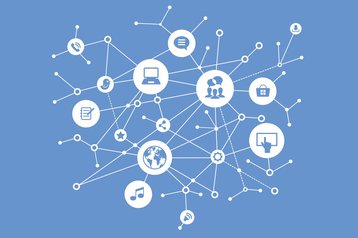New technologies are constantly reshaping the state of modern networking. This simple fact can be applied to many areas of today’s digital business landscape. Whether it’s SD-WAN, automation, edge computing or any other major IT initiative, today’s networks are influenced by new technologies every year, evolving rapidly and becoming more complex all the while. Network performance and security have never been so important, as businesses increasingly rely on their IT infrastructure in order to deliver positive end-user and customer experience, and compete in the market.
But many networking and security tasks that used to be done manually can now be done automatically, and in many cases by the systems themselves. The whole advent of DevOps has driven automation to levels that greatly improve IT efficiency. That said, it can make us blind to what’s really happening on the network.
A critical factor
This is why network monitoring has become so crucial. The central IT infrastructure hub for most businesses, the data center is where a significant portion of network monitoring takes place. High performing, secure IT systems require not just network access, but efficient and optimized access. Let’s explore four common scenarios where monitoring is leveraged in the data center, and how network access technologies like TAPs and packet brokers support those efforts:
- Suspicious Traffic Anomalies: There are many layers involved in any security plan; both physical and digital. All start with some sort of firewall at the perimeter. From there, many companies introduce other tools such as an Intrusion Prevention System (IPS) and Advanced Threat Protection (ATP). These types of security devices require in-line access, so instead of placing these tools back-to-back in the data path, it’s important to leverage a bypass TAP or hybrid visibility solution that can create failsafe access so that power interruptions or offline maintenance issues will not disrupt live traffic. In fact, several years ago Delta experienced an equipment failure that caused a 5-hour outage at one of its Atlanta data centers. Around 2,000 flights were grounded over the next three days, costing the company an estimated $150 million. Bypass or hybrid TAPs could likely have prevented this problem.
- Cyber Security Anomalies: Some security analytics tools leverage machine learning and Artificial Intelligence (AI) to spot anomalies (just look at Darktrace Antigena or Sophos Intercept) in your data traffic that indicate potential security risks. Once spotted, the tools can notify, isolate and potentially remediate the threat. But, none of this is possible without access to consistent and accurate data traffic. These solutions are fed with the right data, without fail. TAPs and packet brokers are becoming the access device of choice, as they can provide 100 percent traffic accuracy without latency, which enables these cyber security tools to perform more efficiently and avoid missed indicators of potential security events.
- Network Performance Problems: Network Performance Management (NPM) tools enable IT teams to locate and troubleshoot performance bottlenecks like network delay, data loss, network link availability, and more. There are many different tools in this market that monitor in different ways, from Riverbed and NETSCOUT to ExtraHop and LiveAction. But for those that use data traffic, access technologies play a critical role in their success. TAPs provide cost-efficient access throughout the network without latency. Also, if (or as many say, “when”) issues such as DDoS attacks occur, TAPs maintain the visibility required for these tools to do their job. Other access technologies such as SPAN ports get dropped (per design), which means IT teams using them end up without the visibility they need at the most critical time!
- Application Performance Problems: Similar to NPM tools, Application Performance Management tools (APM) monitor and manage the performance and availability of software applications. Solutions like Dynatrace or Cisco (AppDynamics) detect and diagnose complex application performance problems to help IT teams maintain expected service levels and ensure positive user experiences. TAPs and packet brokers create a platform that can pull data traffic from across the network, accommodating different speeds from 1Gbps to 40Gbps to consolidate at a single unit (or multiple units managed as a single unit). From this platform, APM tools can do their jobs effectively and efficiently.
One common attribute that affects every one of these four areas - especially within modern data centers - is traffic mobility. With the advent and proliferation of automation, technology is transforming today’s networks into an ever-changing environment focused on efficiency and agility. For example, applications have been designed to spin up and down virtualized instances in order to handle peak loads.
This, coupled with application migration between servers to balance utilization means that data traffic is no longer “static.” It is mobile and constantly moving. TAPs and packet brokers are great equalizers that help maintain accurate and complete visibility for today’s network monitoring and security tools, so they can perform to their fullest potential. They also allow for simplified tool maintenance or upgrades, as well as the ability to add new tools without network disruption.
These network access technologies can dramatically simplify the network and generate significant cost savings. Network access technologies, which are becoming more commonly referred to as visibility platforms, put every critical network tool on the same plane. This saves on the cost of repeatedly implementing tools that are accessing the same network links.
They can enable organizations to make better use of rack “real estate,” as monitoring tools can be consolidated into their own racks and not intermixed within network racks. This also allows monitoring tools to be sized based on their specific traffic requirements and enables maintenance or updates without impacting network operations.
Proper and thorough data center monitoring should be a key focus area for every organization - whether the operations are run on-premises, in the cloud or in a hybrid environment. Your network security and performance depends on it, and in turn so does the success of your digital business. While devoting attention to your major network tools and their capabilities is important, it’s important to remember that they won’t be effective if they’re not deployed correctly and fed with the necessary data traffic.


